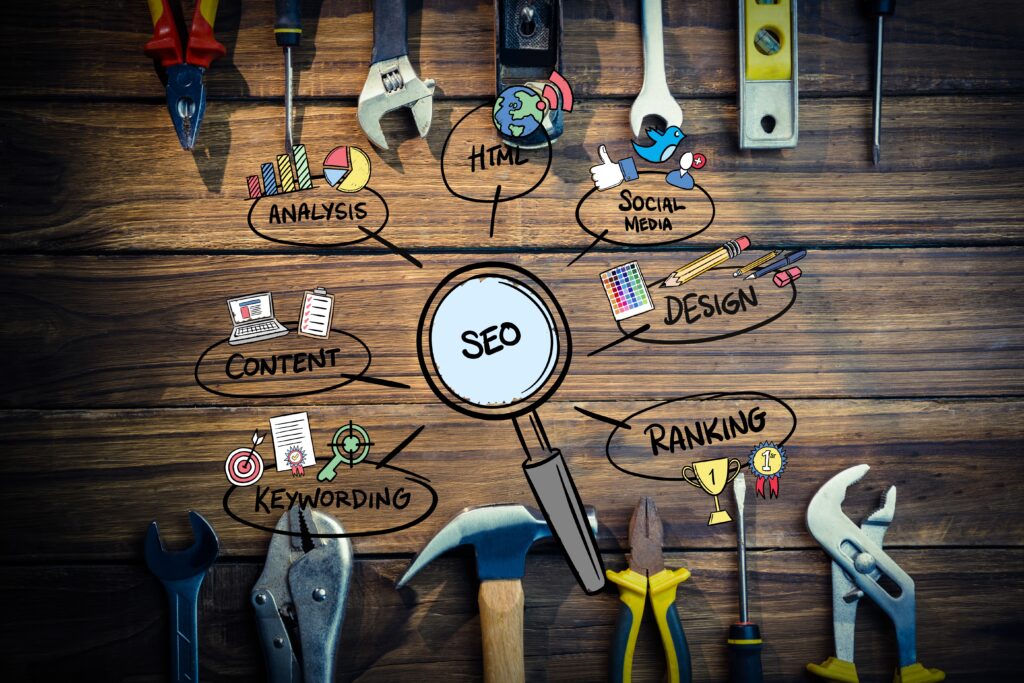
Discover how to optimize images for SEO with tips on file names, formats, alt text, compression, lazy loading, and more to improve your website’s speed and rankings.
🔍 Introduction: Why Image Optimization Matters for SEO
Did you know that images can boost or break your website’s SEO performance?
Images not only enhance user experience and engagement but also play a key role in page speed, accessibility, and search engine rankings. With the rise of visual search and tools like Google Lens, optimizing images has become even more important for websites in 2025.
In this blog, we’ll walk you through everything you need to know about image optimization for SEO — from choosing the right format to writing powerful alt text.
✅ Benefits of Image Optimization for SEO
Before diving into the “how,” let’s understand the “why.”
- 🚀 Improved page load speed (a key ranking factor)
- 📈 Higher rankings in Google Image Search
- 👨🦯 Better accessibility for screen readers
- 📱 Enhanced mobile performance
- 🔄 Improved user experience and lower bounce rate
🛠️ 1. Choose the Right Image File Format
The image format affects quality, compression, and page speed.
🔹 Common Formats:
- JPEG: Best for photographs (smaller file size + good quality)
- PNG: Best for images with transparency or sharp edges
- WebP: Best for performance (high compression + quality)
- SVG: Best for icons, logos, and vector graphics
SEO Tip: Use WebP whenever possible. It’s supported by most browsers and provides faster loading.
🧾 2. Use Descriptive, Keyword-Rich File Names
Google can’t “see” images — it reads file names to understand them.
❌ Bad Example:
IMG_0012.png
✅ Good Example:
digital-marketing-services-kolkata.png
SEO Tip:
- Use hyphens (-) between words
- Keep it descriptive but concise
- Include primary keywords naturally
✍️ 3. Write Effective Image Alt Text (Alternative Text)
Alt text describes the image content for:
- Search engines
- Visually impaired users
- Image fallback if it doesn’t load
🧠 Best Practices:
- Be specific and descriptive
- Include target keywords (but don’t stuff)
- Keep it under 125 characters
Example:
“Subhrajit Paul providing digital marketing services in Kolkata office”
📐 4. Resize Images to the Display Dimensions
Uploading a 3000×3000 image when your site displays it at 300×300 slows down your site.
SEO Tip:
- Use image editing tools like Photoshop, Canva, or TinyPNG
- Resize before uploading
- Match display dimensions to layout

🗜️ 5. Compress Images Without Losing Quality
Compression reduces file size, which boosts page speed and SEO.
🔧 Tools for Image Compression:
SEO Tip: Keep image file sizes under 100 KB for faster loading.
🕒 6. Use Lazy Loading to Improve Speed
Lazy loading defers image loading until the user scrolls down, improving performance.
How to Enable:
- In WordPress: Use plugins like WP Rocket or Smush
- Manual HTML:
<img src="image.jpg" loading="lazy" alt="Alt text">
SEO Tip: Lazy loading helps Google crawl important content first.
🔍 7. Create and Submit an Image Sitemap
An image sitemap helps Google discover all images on your site — especially ones loaded via JavaScript or lazy loading.
You Can:
- Use tools like Yoast SEO (auto image sitemap)
- Add image tags to your existing XML sitemap
<image:image>
<image:loc>https://example.com/image.jpg</image:loc>
</image:image>
🖼️ 8. Don’t Forget Structured Data for Images
Structured data (schema) helps search engines understand images better and display them in rich results.
Example:
Use Product, Recipe, or Blog schema for relevant pages with images. Json
{
"@context": "https://schema.org",
"@type": "BlogPosting",
"image": "https://example.com/images/blog-cover.jpg"
}
SEO Tip: Use Google’s Rich Results Test to verify.
📸 9. Use Original and High-Quality Images
Stock images are overused and often ignored by users and Google. Original visuals improve trust, brand authority, and SEO.
SEO Tip: Use tools like Canva, Figma, or take your own high-resolution photographs for better impact.
📋 10. Add Captions and Contextual Placement
Captions (text under an image) are read on average 300% more than body text.
Best Practices:
- Place images near relevant text
- Add keyword-rich captions
- Don’t overuse visuals — keep it balanced
🚀 Bonus Tips for Advanced Image SEO
- ✅ Use CDN (Content Delivery Network) to serve images faster
- ✅ Optimize image loading for mobile-first indexing
- ✅ Host images on your domain (not third-party)
- ✅ Use browser caching to store images locally
- ✅ Conduct regular image audits using tools like Ahrefs or Screaming Frog
🧾 Final Checklist for Image SEO
| Optimization Step | Status |
|---|---|
| Use correct file format | ✅ |
| Descriptive file name | ✅ |
| Keyword-rich alt text | ✅ |
| Image compression | ✅ |
| Lazy loading enabled | ✅ |
| Image sitemap submitted | ✅ |
| Structured data used | ✅ |
| Images resized properly | ✅ |
| Original, high-quality images | ✅ |
✍️ Final Thoughts: Make Every Pixel Count
Optimizing your images for SEO is more than just a technical chore — it’s a powerful strategy to improve rankings, drive traffic, and deliver value. Every kilobyte saved and keyword added can push your site higher in search results.
Start optimizing your images today and watch your SEO performance skyrocket.
💼 Want Expert SEO Help?
Subhrajit Paul’s Digital Solutions offers advanced SEO Services in Kolkata, including image SEO, technical audits, on-page optimization, and more. Let’s make your website a traffic magnet!
